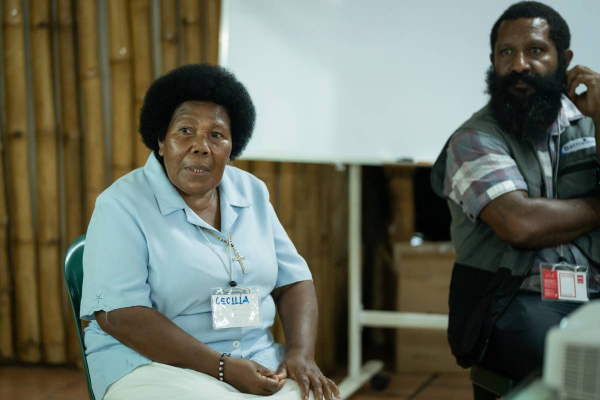After the Storm: Moving Beyond Hurt Into Real Community

My daughter’s school flooded when Hurricane Florence lumbered its way over the Carolinas in September 2018.
While our area wasn’t as devastated as many others, the damage was enough to put our lives on hold for a few days. Once power was restored to all the surrounding neighborhoods and the roads were cleared of debris, the affected classrooms had to be treated for mold and some items had to be replaced completely.
It’s amazing to see the impact one storm can make. Physical storms like hurricanes are often unpredictable. And though we know we can expect emotional and mental storms in our lives, they often roll in and deliver just as much destructive power.
Relational storms are among the worst. Everyone I’ve ever met has experienced relational hurt of some kind. Betrayal, rejection, abuse, gossip, codependency and exclusion are just a handful of the numerous ways we can wound each other. The mess left behind can be as toxic as muck deposited by wayward stormwater.
So why even try to have relationships? I’ve been in that place before — where loneliness seems better than risking being hurt again. Real relationships require vulnerability. But how can we move into community when experience has taught us that it might not be safe?
Starting With Truth

It seems counterintuitive, but I think the first step to move forward is to pause. Storms have a way of whipping us sideways and tearing us from our moorings, so it’s critical to take time to make sure that our minds are steadied by a secure connection to Scripture.
Philippians 4:8b says, “... Fix your thoughts on what is true, and honorable, and right, and pure, and lovely, and admirable. Think about things that are excellent and worthy of praise” (NLT). In my life, sometimes I’ve honestly felt like that verse is just annoying optimism that ignores the harsher realities of life. How can Paul expect us to focus on what is lovely and admirable when so much around us is ugly and broken?
Paul was anything but naive or, in my words, “annoyingly optimistic” though. His relationship with his future Christian brothers and sisters began in horrific violence as he hunted and persecuted them (Acts 8:1-3). But even after he met and was transformed by Jesus, it took awhile for Christians to trust Paul (Acts 9:26-27). Once he was accepted by the church, he still suffered through beatings, shipwrecks, opposition and imprisonment (2 Corinthians 11:23-26).
Paul understood difficult relationships and wrote about his own conflict with ministry partners (Acts 15:36-39). His encouragement to the Philippians to fix their minds on positive things was not an empty recitation of feel-good words — it was solid instruction on how to change ingrained thought patterns.
I believe there’s a reason Paul’s exhortation started with a reminder for the Philippians (and those of us reading his words today) to think about what is true. He understood that new patterns, expectations and behaviors only last if they are built on the steady foundation of reality.
If we want to move from a history of relational hurt into a future of healthy, joyful community we have to ask ourselves a few basic questions.
“Who Am I?”
When we enter a relationship of any kind, we offer a part of ourselves, but we can’t do this in a safe and healthy way if we don’t understand who we really are. It’s easy for us to be warped by lies about our identity and purpose. Measuring what we’ve been told or believe about ourselves against what Scripture teaches is the only way to untangle those lies from the reality of God’s truth.
When I believe that I am unnoticed or unwanted, Zephaniah 3:17 paints a picture of a God who sees me and celebrates: “For the Lord your God is living among you. He is a mighty Savior. He will take delight in you with gladness. With his love, he will calm all your fears. He will rejoice over you with joyful songs” (NLT).

When I feel driven to appear perfect, Psalm 103:13-14 says that God loves me in my imperfect frailty: “The Lord is like a father to his children, tender and compassionate to those who fear him. For he knows how weak we are; he remembers we are only dust.”
When I tell myself that I’m a hopeless mess, Philippians 1:6 reminds me that God’s work in me isn’t over yet: “And I am certain that God, who began the good work within you, will continue his work until it is finally finished on the day when Christ Jesus returns.”
As we invite Scripture to reframe our sense of self, we learn to rest in reality rather than be defined by opinions — either someone else’s or our own. We are God’s masterpiece (Ephesians 2:10), deeply loved by him (Ephesians 3:18) and worth enough that his Son died to rescue us (John 3:16-17). Any voice that says otherwise is not speaking truth.
“What Needs to Be Forgiven?”
Once we begin to grasp our value in God’s eyes, it’s time to look at the wounds we carry.
I’ve always had a tendency to believe the best about people. This can be a beautiful gift that enables me to see potential and cheer people on as they grow toward it. But my optimism can also be dangerous, tempting me to gloss over harmful behavior by trying to excuse it away as unintentional.
Several months after I thought I had forgiven someone who had hurt me badly, I told a close friend that I was suddenly dealing with major anger. My friend’s response caught me off guard: “Good! You’re finally valuing yourself enough to admit that what happened to you was not okay!”
My dismissal of the other person’s serious wrongdoing was not forgiveness — it was avoidance. To truly forgive and heal, I had to name the offense as well as all the ways it impacted me. This was an incredibly painful process that took time as well as the help of my husband, trusted friends and a qualified counselor.
In addition to truly forgiving, I needed to walk through the process of identifying my own harmful and sinful responses — not to beat myself up, but allow God’s Spirit to bring another layer of freedom. 1 John 1:9 promises, “But if we confess our sins to him, he is faithful and just to forgive us our sins and to cleanse us from all wickedness” (NLT).
Sin’s tendrils are long and broad, but Christ defeated it for our sake (Romans 6:10-11). We don’t have to continue living under the shadows of what we’ve done or what’s been done to us. We can choose to take one step, then another and another away from destructive thoughts and behaviors.
We can truly step into that reality of Philippians 4:8.

“What’s the Point?”
As we learn who we are as God’s children and begin moving into places of forgiveness and freedom, we need to tackle another question: “What’s the point of community?’
My kids are wrestling through this as they navigate tricky relationships with peers. They know the sting of being left out, the thrill of being welcomed, the unsettled limbo of not being sure where they fit and the elusive steadiness of belonging. I remember the tension of those years, where there were cliques, “mean girls”, rumors and outcasts. A lot of us just tried to survive day to day. What I didn’t realize then was how many people would arrive in adulthood still trying to soothe their childhood scars.
How many of us carry expectations and desires that are echoes of our youth? How many of us pursue relationships out of a lingering need to feel significant, wanted, protected or comfortable? While these things can coexist in healthy community, if we expect our relationships to heal the wounds inflicted by others, we will always be disappointed. God created people as companions for each other — not ultimate sources of fulfillment. To understand the point of community, we have to look at God’s purpose for it.

The first place we see community in Scripture is in the relationship of the Trinity: “Then God said, ‘Let us make human beings in our image, to be like us. They will reign over the fish in the sea, the birds in the sky, the livestock, all the wild animals on the earth, and the small animals that scurry along the ground.’ So God created human beings in his own image. In the image of God he created them; male and female he created them.” (Genesis 1:26-27, NLT; emphasis mine).
We can’t wrap our minds around how God can be one being and also three, but we do know being made in his image means we’re made for relationship. Jesus reflected this truth as he prayed that his followers would “... all be one, just as you and I are one — as you are in me, Father, and I am in you. And may they be in us so that the world will believe you sent me” (John 17:21).
The purpose of community is to represent God’s nature in a tangible way to those around us as we “think of ways to motivate one another to acts of love and good works” (Hebrews 10:24). Our lives on earth are just the foreword in the story of togetherness that’s been written, when we’ll stand clear-eyed and shoulder-to-shoulder before God’s throne, our unified worship sweet and wild (Revelation 7:9-10).
No More Fear
Firmly anchored in the reality that our relationships are meant to bring God glory and honor, we are finally free to give and receive love without fear. We can acknowledge our wounds and needs without shame. Steadied by God’s Word, we are liberated to move beyond hurt into healing, laying down our expectations so we can step boldly into real and vulnerable relationships built on the One who will never fail us.
God is doing amazing things around the world, and you can be a part of seeing people encounter Him through Scripture in a language and format they clearly understand. Join the work by praying with us!






